
- Overcooking a steak past medium can lead to loss of flavor, moisture, and dimension, according to experts.
- Price should not be the sole factor in selecting a steak, as differences in cost reflect variations in flavor, marbling, and overall eating experience.
- Understanding the differences between various cuts of steak is crucial to selecting the right one that will delight your taste buds.
Placing an order for a steak might be one of the easiest things you can do in a restaurant. You read through the menu, choose a cut, tell the server how you’d like it prepared, and wait for the plate to arrive. Easy, right? Not always. For some, what seems to be a straightforward decision is the precursor to a disappointing night. The truth is, steak is one of those dishes where details matter. The cut of steak you choose, how you want it cooked, and what you pair with it can all influence the end result. However, most guests just see it as a simple order.
To gain some sense of what diners should consider when ordering steak, we got insight from experts who prepare (and conceptualize) steak dishes for a living. Michael Reed, owner and chef of the Michelin Guide-recommended and James Beard Award-nominated Poppy & Seed in Anaheim, California, and Oliver Lange, corporate executive chef of Next Door Astor Place in New York City, shared their opinions on the mistakes they most frequently observe. Their view emphasizes what can go wrong with steak, but also how we can build a memorable experience when we order with a bit more thought.
Misunderstanding doneness
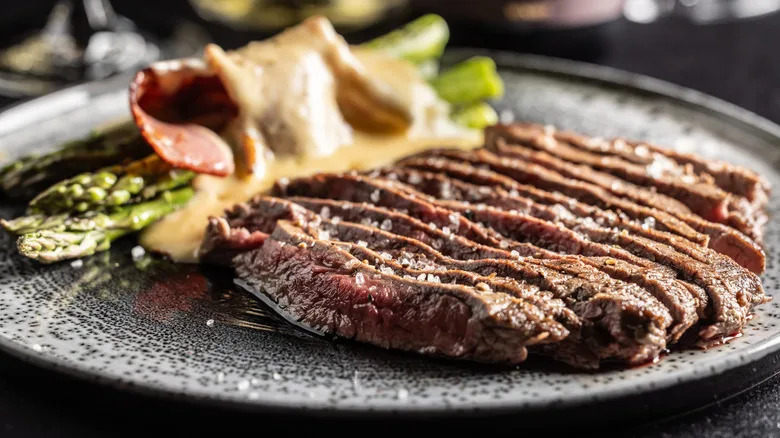
Few topics create more debate around the dinner table than steak doneness. Everyone has an opinion, but not all levels of doneness show the same respect to the meat. Both Reed and Lange agree that overcooking a steak well past medium is a disservice to the quality of meat, and its flavor potential.
Reed sees that doneness directly affects tenderness and flavor. Steaks that are perfectly medium-rare or medium achieve a hot, juicy center and a flavorful crust on the outside. After the temperature rises above that, particularly into well-done, the meat starts to lose its appeal. “Of course, guests are welcome to their preferences, but at a certain point, the steak is going to lose flavor, moisture, and dimension, which are the exact reasons why you order a steak in the first place,” Reed says. Overcooking cuts with less marbling and fat, like flank or hanger steak, only accentuates their naturally chewy texture.
Lange, corporate executive chef at Next Door, agrees. He holds the belief that too much is lost when a steak is cooked beyond medium. “The further past medium a steak is cooked, the more you lose in natural juiciness and depth of flavor,” he says. To him, the perfect range is from medium-rare to medium. Doneness is one of the most important factors, if not the most important, in bringing out the best in the cut you select.
Selecting solely based on price, not taste
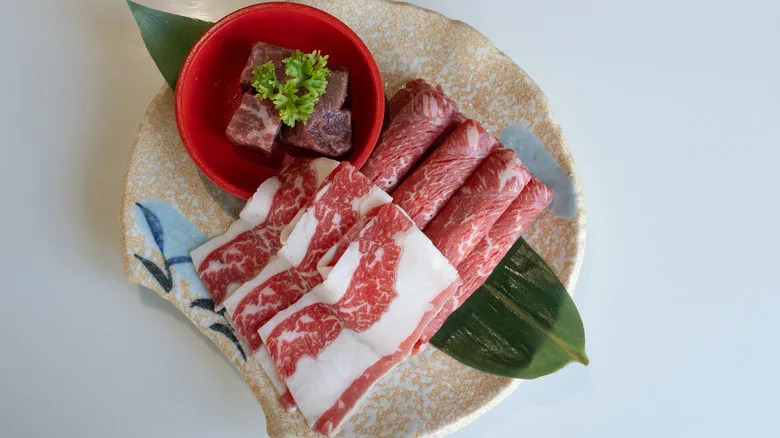
Steak is often one of the more expensive items on a menu, and it is easy to allow the price to dictate your decisions. You may assume that the highest-priced cut is always going to be the best, or that paying less means you’ll receive a lesser cut of meat. This assumption isn’t completely unfounded.
According to Reed, “…price plays a significant role in ordering decisions for guests, as they understandably want to see the value of what they’re getting, especially when it comes to a pricier dish like a steak.” He goes on to say that “In an ideal world, we want diners to prioritize taste and quality above all else.” Ordering a steak to him is a question of knowing what you want, rather than ordering the most premium item on the menu. Lange agrees and shares a bit of insight into what price points actually reflect. “Yes, price matters, especially on premium cuts. But in most cases, the difference in cost reflects real differences in flavor, marbling, and overall eating experience,” he says.
So, if you have the means, you should order your steak based on your preferences, not its price. If you don’t like a fatty steak, why order the most marbled cut? Choosing a cut that delights your taste buds will almost always result in a better experience.
Not understanding various cuts
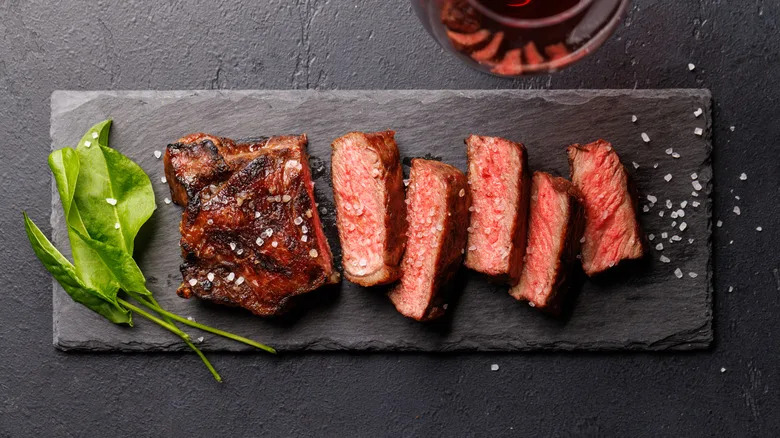
A steak menu can look simple at first glance, but there’s something unique about every cut. Some are fibrous and lean; others are marbled and rich. Each will respond differently to cooking methods. Diners who are unaware of these differences walk away disappointed, not because the cut was improperly prepared, but because they ordered the wrong cut. Reed often finds this to be the case with leaner cuts, like hanger and flank steak. These are rich in flavor, but they aren’t as tender as a strip or a ribeye. “We love cuts like hanger steak, flank steak, and skirt steak that are full of flavor,” he says. “However, since they are leaner cuts with a strong grain, they can be poorly selected by diners who are unaware that these cuts require a marinade and specific slicing technique to be tender and fully enjoyed.”
Lange mentions the ribeye as a second misused cut. “The ribeye is often overlooked by those who think it’s ‘too fatty,’ but that marbling is where the flavor lives,” he says. The very element that certain visitors see as a shortcoming is what makes the cut moist and full of flavor. The key to an elevated steak experience is to recognize that each cut has something special to give. Understanding those differences makes the choice that much more worth it, so walk in knowing what you want.
Not asking the chef questions

Customers should be getting advice from the server or chef when they place their order, but many diners don’t seize the opportunity. This leads to misaligned expectations, especially regarding flavor or cooking style. Reed and Lange both share the importance of communication between a diner and their server or chef.
“For the diner at Poppy & Seed, we really love when they know and understand their own personal preferences; from the cut of meat they like to the desired doneness,” Reed says. “We love being there to help and guide guests, and to ensure a great meal, we ask questions about what they like and always make sure we’re communicating clearly.”
When asked about the most typical blunders he sees from customers, Lange answered, “ordering without asking questions.” He went on to explain how vital communication is during the dining experience, stating: “Every restaurant has a different sourcing and aging philosophies, and chefs are usually eager to talk about it. Diners who engage tend to end up with a cut and preparation that matches their taste far better.” In short, some curiosity and a brief conversation with the staff can provide a much more fulfilling dining experience.
Overloading with sauces or seasoning before tasting
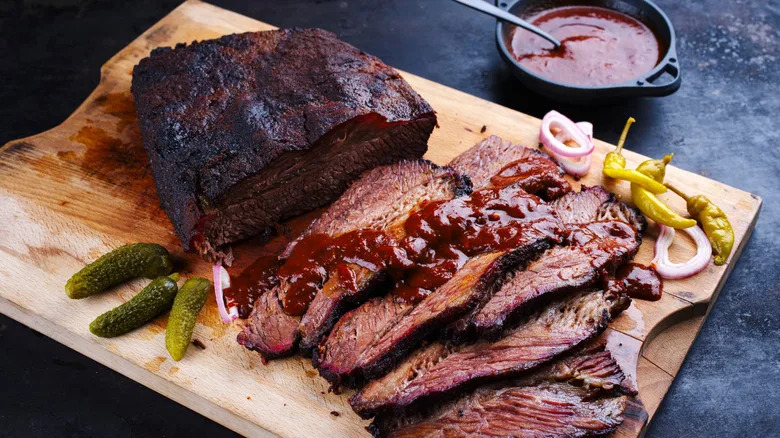
For many patrons, the instant reaction upon seeing a steak come out is to reach for the sauce or seasonings on the table. Even though condiments do add to a dish, Reed and Lange agree that too much too soon is a mistake. According to Lange, a great steak should be tasted on its own. Loading on toppings before even tasting it can mask what makes the cut special.
Reed is disappointed when diners load their steak with sauce as soon as it arrives. “Of course, sauce can be great, but without tasting the meat first, how do you know it needs more flavor?” he says. By first tasting the steak bare, diners can make sauce and seasoning into a matter of preference and not habit.
Lange is also a proponent of restraint, especially when it comes to seasoning. “Too often, people reach for heavy sauces or extra salt before tasting,” he explains. ” A properly cooked steak should stand on its own.” To him, “heavy sauces tend to mask the work that went into the steak,” and he encourages guests to use a sprinkling of salt or a dap of wasabi instead.
Pairing it with overpowering sides
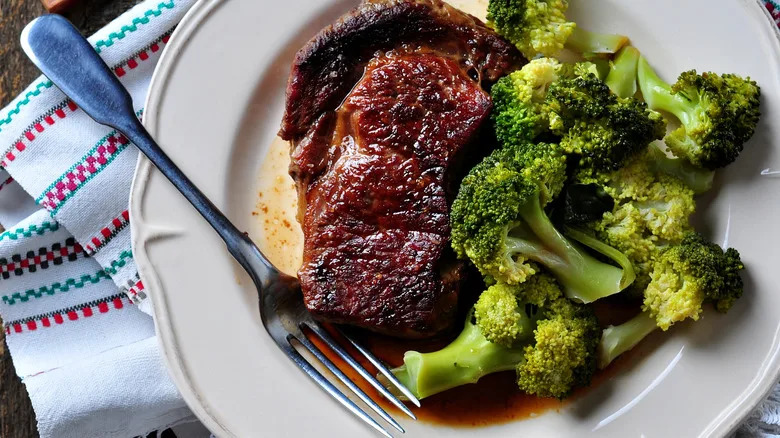
A well-cooked steak deserves to be the star of the plate, but diners can undermine it by serving it with sides that compete rather than complement. While accompaniments can definitely add to a meal, our experts caution that rich or complex sides draw attention away from the main attraction.
“Personally, if I’m going to order a steak, I don’t want other flavors to overwhelm the meat’s natural taste,” says Reed. “Dishes like mac and cheese, creamed corn, creamed spinach, and loaded baked potatoes are rich and absolutely delicious, but can also easily drown out the flavor of a perfectly cooked steak.” He suggests lighter sides to counteract the meat’s richness. A light, well-cooked vegetable, for example, can contrast the beef without upstaging the show.
Lange agrees, saying “Heavy, overly creamy sides can overwhelm the palate.” However, he has a different solution than Reed. Lange recommends pairing a steak with something bright or acidic, and not necessarily light, to balance the richness of the meat. Diners aren’t steak experts, so of course they often choose sides based on indulgence alone, and unknowingly detract from the overall meal.
Expecting filet mignon to be flavorful

Filet mignon is usually considered the crème de la crème of steakhouse cuisine. It’s been name-dropped in films and television shows as the pinnacle of high-society cuisine. Its popularity and high cost created expectations among the public of being the most flavorful and extravagant cut. However, that is simply the case.
Reed says that filet mignon is so expensive because of its tenderness, not its flavor, which is why the Poppy & Seed rarely serves it. To him, there are much more interesting and flavorful cuts to choose. Lange seems to appreciate filet mignon a little more than Reed, but his diners are just as confused by the iconic cut. “Diners sometimes order filet mignon expecting bold flavor, when it’s really about texture and tenderness,” he states.
According to our interviewees, if you care more about flavor than tenderness, fatty cuts like the ribeyes and lean cuts like the hanger steak might be better options.
Yasmin Duale